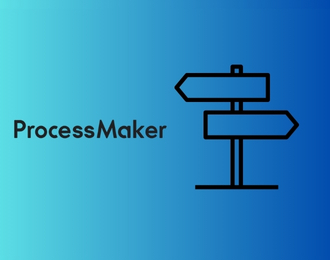The insurance industry is facing a pivotal moment. As customer expectations rise, operational costs increase, and compliance requirements become more stringent, insurers must find ways to adapt quickly while maintaining high levels of service and accuracy.
Enter intelligent automation—a game-changer for the industry, enabling insurers to transform their operations, enhance customer experiences, and drive business growth.
In this article, we’ll discuss intelligent automation in insurance, its key benefits, and practical use cases. We will also highlight how AI-powered process automation tools like FlowForma enable insurers to automate complex processes, reducing the need for extensive IT resources.
What Intelligent Automation Means for Insurance
 Intelligent process automation in insurance
Intelligent process automation in insurance
Intelligent automation integrates a variety of technologies to automate repetitive tasks, streamline workflows, and accelerate decision-making in the insurance industry. It uses artificial intelligence (AI), Robotic Process Automation (RPA), Machine Learning (ML), and Natural Language Processing (NLP) to perform not just routine tasks but also more complex functions.
The Role of AI, Machine Learning, and Human-in-the-Loop Automation
AI and machine learning extend traditional automation by enabling systems to learn from data and make real-time, context-aware decisions. For example, in underwriting, AI can analyse historical claims, identify patterns, and provide actionable recommendations—tasks that would normally require significant input from a human underwriter.
Robotic Process Automation (RPA) complements this by automating rule-based, repetitive tasks, such as data entry, document handling, claims data collection, and policy renewals. However, although RPA is highly effective at executing structured tasks, it does not involve human judgment.
This is where Digital Process Automation (DPA) and the human-in-the-loop approach make a difference.
Unlike RPA, which primarily replaces repetitive tasks, DPA is designed to connect people, data, and systems within a single workflow. It keeps humans engaged at critical points where judgment, decision-making, or collaboration is necessary.
For instance, while DPA can automatically collect and pre-process underwriting data, a human underwriter can review complex risk assessments and make final approval decisions.
Why It's Crucial for the Insurance Industry
The insurance sector has long relied on paper-based, manual systems that are slow and prone to error. As insurers face more complex regulatory requirements and a more competitive landscape, the need for more efficient, scalable solutions has never been greater.
Intelligent automation helps insurance companies break free from outdated systems and modernise their operations in a way that reduces costs, speeds up service delivery, and improves accuracy.
By integrating intelligent automation, insurance companies can accelerate their journey towards digital transformation, allowing them to meet customer expectations, stay compliant, and drive profitability with minimal disruption.
The Advantages of an Integrated and Intelligent Process Automation System
 Five Key Advantages of an Integrated and Intelligent Process Automation System
Five Key Advantages of an Integrated and Intelligent Process Automation System
An integrated intelligent process automation system goes beyond simple task automation. It connects various systems across the organisation, streamlining workflows and ensuring that data flows seamlessly between departments and processes.
Below are the key advantages of adopting such a system:
1. End-to-end process automation
Unlike traditional automation tools, which may only automate isolated tasks, intelligent process automation (IPA) connects multiple processes within the insurance company.
For instance, the claims process, which involves various departments (claims adjusters, underwriters, and customer service), can be automated end-to-end, reducing bottlenecks and eliminating redundant tasks.
By automating the entire process, insurers not only speed up service delivery but also improve coordination across teams, enhancing collaboration and breaking down silos within the organisation.
2. Real-time insights and reporting
Integrated systems provide real-time data, allowing insurers to monitor workflows, track performance metrics, and make informed decisions. This level of visibility helps identify bottlenecks and inefficiencies, enabling continuous process improvement.
For example, insurance companies can use real-time data to measure claims processing times, identify trends in customer inquiries, and adjust processes accordingly to maintain high levels of efficiency.
3. Scalability and flexibility
As insurance companies grow and expand their operations, an integrated IPA system can easily scale to accommodate new processes or departments. This flexibility ensures that automation can evolve with the business, supporting the company’s long-term objectives.
For mid-sized insurers, this scalability means they can start automating essential processes and gradually expand automation efforts as needed, without the need for a significant overhaul of their infrastructure.
4. Enhanced customer experience
An integrated automation system can drastically reduce customer response times, enabling faster policy issuance, claims settlements, and customer support.
This improves customer satisfaction by providing quicker, more reliable services. AI-driven chatbots, for example, can respond to customer queries instantly, reducing wait times and improving engagement.
5. Greater collaboration
By connecting all stakeholders—underwriters, claims handlers, customer service agents, and compliance teams—an integrated system fosters better collaboration and coordination. This ensures that everyone involved in a process is on the same page, reducing delays and enhancing productivity.
Key Benefits of Intelligent Automation in Insurance

The advantages of intelligent process automation in insurance
As the insurance industry becomes more competitive, intelligent automation offers significant advantages that help insurers enhance operational efficiency, cut costs, and improve customer experience. Here are the key benefits:
1. Cost savings
By automating repetitive tasks, insurance companies can eliminate the need for large teams dedicated to manual work, such as data entry, document verification, and claims processing. This reduces both direct costs (labour, overheads) and indirect costs (errors, delays).
Additionally, automation platforms like FlowForma ensure that automation is scalable, meaning that companies can handle more complex workflows without needing to increase their headcount.
2. Greater operational efficiency
One of the biggest advantages of automation is speed. Routine tasks such as insurance claims processing, policy renewals, and underwriting, which typically take several days or weeks, can be completed within hours or even minutes.
By automating key stages of the process, insurance companies can dramatically reduce turnaround times and serve customers faster.
3. Improved compliance and auditability
Insurance is a highly regulated industry, and maintaining compliance with laws such as GDPR, DORA, and Solvency II is critical.
Intelligent automation helps insurers adhere to regulations by automating reporting and ensuring that processes follow predefined rules and guidelines. Automated audit trails and real-time reporting help insurers maintain transparency and easily demonstrate compliance during audits.
4. Increased workforce productivity
Intelligent automation is a catalyst for enhancing workforce productivity across industries. According to a PwC report, generative AI tools are making workers more valuable, with wages rising 2x more quickly for sectors exposed to AI, boosting individual and team productivity.
In the insurance sector, this translates to streamlined processes, reduced manual tasks, and more time for employees to focus on strategic and customer-centric activities.
Use Cases for Intelligent Automation in Insurance
 Top 5 intelligent process automation examples for insurance
Top 5 intelligent process automation examples for insurance
Intelligent automation is being implemented across various areas of the insurance sector to improve efficiency, speed, and customer experience. Below are a few key use cases:
1. Claims Management Automation
The Challenge
Claims management is a resource-intensive process that involves collecting documents, verifying information, and making decisions about settlements. This can lead to long processing times, delayed payments, and dissatisfied customers.
The Solution
Companies like Aviva UK implemented over 80 AI models in its motor claims domain, reducing liability assessment time by 23 days and cutting customer complaints by 65%. This transformation saved the company over £60 million in 2024.
Intelligent automation enables insurers to automate the entire claims workflow. AI-powered systems can automatically extract and validate claim data, assess it against predefined rules, and trigger approvals or escalations without manual intervention.
Watch this demo to see how insurers can automate the claims process workflow using FlowForma.
2. Policy Underwriting Automation
The Challenge
Underwriting is one of the most complex and data-heavy processes in insurance, requiring manual entry of risk data, analysis, and pricing decisions. This process is often slow and can lead to inconsistencies or delays.
The Solution
Implementation of automation in underwriting helps insurers gather and process data automatically, assessing risks and issuing policies in real time. AI models continuously learn from new data, improving the accuracy of risk assessments.
Watch this video to learn more about how automation enhances the insurance underwriting process:
3. Customer Service Automation
The Challenge
Insurance companies often face high call volumes, particularly during claims or policy renewal periods. This leads to long wait times, customer dissatisfaction, and high operational costs as teams struggle to handle a large influx of inquiries.
The Solution
AI-powered chatbots and automated ticketing systems can handle routine queries such as policy information, claims status, and document requests. This reduces the workload on human agents and improves response times, providing customers with instant support 24/7.
In fact, Gartner predicts that by 2029, Agentic AI will resolve common customer issues without human intervention. This shift in customer service can reduce operational costs while improving process quality and customer satisfaction.
4. Policy Renewal Automation
The Challenge
Renewing policies traditionally requires manual intervention, including sending reminders, collecting payments, and updating policy details. This can lead to missed renewals, delays in updating information, and customer frustration.
The Solution
Intelligent automation can handle the entire policy renewal process, sending reminders, collecting payments, and updating policy details automatically. This reduces administrative overhead and ensures timely renewals, improving customer retention.
Watch this demo to see how mid-sized and large companies can automate the policy renewal workflow through FlowForma.
5. Fraud Detection Automation
The Challenge
Insurance fraud is a significant concern, with fraudulent claims costing the industry billions annually. Detecting fraud requires reviewing vast amounts of data, including claims history, customer behaviour, and external sources like social media.
The Solution
AI and machine learning algorithms analyse claims data in real time, flagging potentially fraudulent activity based on patterns and historical data.
According to a Deloitte report, AI is providing insurers with new fraud detection models that can free up human investigators to focus on more complex fraudulent cases across the claims lifecycle.
How FlowForma Empowers Intelligent Automation in Insurance
Insurance companies looking to adopt intelligent automation need solutions that are flexible, secure, and accessible to business users, not just IT teams. FlowForma addresses these requirements by combining a no-code platform, agentic AI tools, and robust data security, enabling insurers to digitise and automate complex processes efficiently.
1. No-code platform
One of the most significant barriers to automation in insurance is reliance on IT departments or specialist developers. FlowForma’s no-code platform removes this obstacle by enabling business users to design and implement automation workflows themselves.
Users can build insurance workflows such as claims management, policy underwriting, or customer onboarding by simply using drag-and-drop forms, configurable rules, and step-based workflows.
Learn more about the advantages of a no-code platform in this video showcasing FlowForma customer use cases from Aon, Marsh McLennan and PPSF.
For insurers, this means they can start automating immediately, without lengthy IT approval cycles or costly custom development, accelerating their digital transformation initiatives.
2. AI-powered automation
FlowForma’s AI capabilities take intelligent automation beyond simple workflow management:
AI Copilot: Acts as a digital assistant for process builders. Users can describe a workflow in plain language or upload a diagram, and the Copilot instantly generates the structured workflow, including steps, questions, and rules.

An insurance claims process flow created by FlowForma Copilot
Agentic AI: These AI agents integrate into workflows to provide context-aware recommendations, ensuring that decisions are based on real-time data and predefined rules.
Discovery Agent: Identifies automation opportunities by analysing existing documentation, wikis, or operational processes, helping insurers uncover bottlenecks that can benefit from automation. Learn more about FlowForma’s Discovery Agent.
Together, these AI tools allow insurers to reduce manual intervention, improve consistency, and accelerate the processing of complex workflows like multi-step underwriting or compliance checks, making automation smarter and faster.
3. Data security and compliance
For insurers, data security and compliance are paramount. FlowForma ensures that all data captured in workflows is stored within the client’s own SharePoint tenancy, giving organisations complete control over their information.
By ensuring that data remains in the client's environment, FlowForma eliminates the risk of third-party data breaches, enabling insurers to comply with GDPR and other industry regulations.
4. Intelligent document processing
FlowForma integrates document generation into its workflows, allowing insurers to create documents automatically based on data captured in the process.
 FlowForma’s automated document generation feature
FlowForma’s automated document generation feature
Whether it’s a claims settlement letter, policy renewal, or an audit report, FlowForma ensures all documents are consistently formatted and compliant with regulatory standards such as DORA and ISO.
6. Transparent pricing
Unlike many automation tools that involve hidden costs or complex pricing models, FlowForma offers transparent, process-based pricing. This means that insurers can implement intelligent automation and automate processes as their needs evolve without worrying about unexpected costs.
See the complete pricing breakdown here
💡Real-world example: How Aon enhanced operational efficiency with FlowForma
Aon, an insurance giant, faced the challenge of managing complex business processes across various departments. Their reliance on manual workflows and disconnected systems led to inefficiencies, increased operational costs, and a lack of visibility into key processes.
By adopting FlowForma’s no-code process automation, Aon empowered its business users to design, automate, and optimise their own processes.
Read the entire case study here to learn more.
Start your Insurance Automation Journey with FlowForma

FlowForma’s insurance playground
Intelligent automation is not just a passing trend—it’s the future of the insurance industry. By leveraging no-code platforms like FlowForma, insurers can reduce operational costs, speed up critical processes, improve accuracy, and enhance customer satisfaction.
As automation becomes increasingly accessible, it empowers insurers to stay ahead of the competition, adapt quickly to market changes, and deliver superior service to their customers.
FlowForma offers a powerful, scalable solution that enables insurers to adopt intelligent automation without relying on costly IT projects.
Are you ready to transform your insurance business? Get started by protyping your insurance processes in FlowForma's Insurance playground. Watch your automated process come to life before your eyes and see how intelligent automation can revolutionise your operations and improve your customer experience.
.png) By
By 



